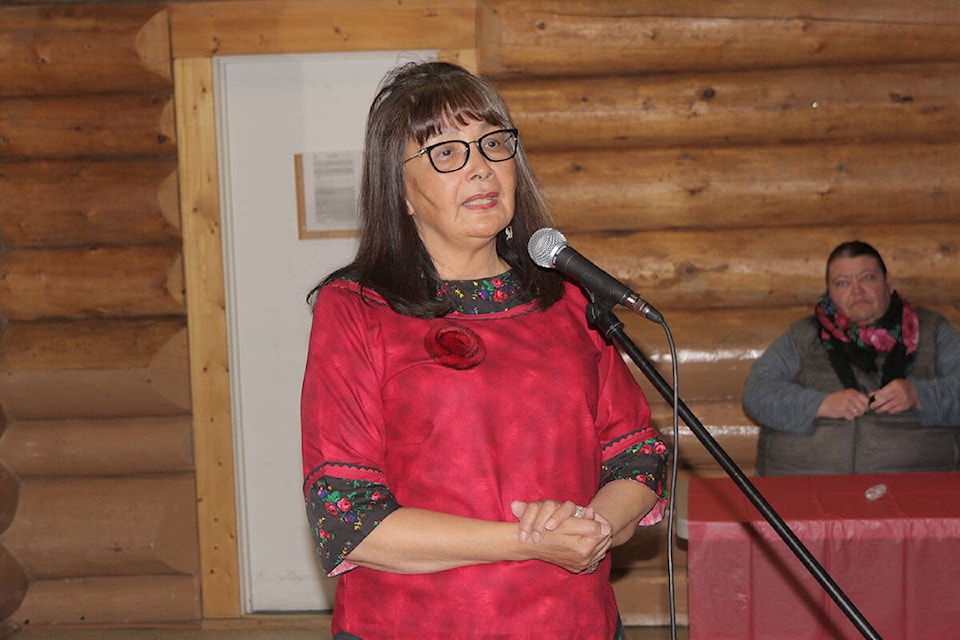Work on making life safer for Indigenous women in Canada and cracking the countless cases of Missing and Murdered Indigenous Women and Girls is only beginning, but Inuvik Twin-Lakes MLA Lesa Semmler takes stock in how far things have come over the last decade.
“This topic is near and dear to my heart,” she said. “So when our our government didn’t have an action plan and the federal government didn’t have an action plan, that’s when I started to fight. Within a year, we got a draft action plan on what the government is doing with those 231 calls for justice.
“You should see all the red shirts they have for all the schools. When I started this journey in 2015, we didn’t even know what Missing and Murdered Indigenous Women was. Now we’re here, seven years later and all our kids are starting to realize and we’re okay to talk about these things.
“We need to talk about them. We need to release it, we need to deal with it so we can move forward.”
Semmler gave an update on the progress of bringing justice to MMIWG across Canada during a May 5 dinner she co-hosted with Native Women’s Association of the NWT president Denise McDonald to commemorate Red Dress Day.
Inspired by a protest in Bagota, Columbia, the day is a nationwide effort to raise awareness to the plight of Indigenous women. Semmler noted the problem wasn’t limited to just missing and murdered women, but also women trapped in abusive relationships, children growing up in the child welfare system and women forced to live on the streets.
Semmler said Indigenous women and girls are 12 times more likely to be murdered or to go missing than members of any other demographic group in Canada — and 16 times more likely to be slain or to disappear than white women.
Indigenous women in Canada today are three times more likely than non-Indigenous women to be violently or sexually assaulted. Women account for 81% of the victims of intimate partner violence in the NWT and the rate of police-reported intimate partner violence in the NWT is almost 10 times the national average.
“Of these reported incidents 81 per cent of the victims are women,” she said. “We do have people that may identify as other or non binary or males in this category too. Intimate partner violence is not always just one way, but the rates are higher against women, and especially when it’s Indigenous women.”
As horrifying as the statistics are, in reality the situation may be much worse. Semmler said systematic racism by police officers throughout the decades resulted in a lot of cases being improperly documented or not documented at all. RCMP had initially estimated 1,000 women had gone missing, but the Native Women’s Association of Canada concluded there were in excess of 4,000 cold cases.
One example Semmler highlighted was the case of Bernice Williams, who lived on the street in the Vancouver East side in the 1980s and reported many of the women she knew in the area had gone missing to police. Officers at the time, said Semmler, largely brushed off the reports and assumed the missing women had gone home. Remains of many of the women reported missing later turned up buried on convicted serial killer Robert Pickton’s farm.
But even today many Indigenous women are in danger of violence. McDonald pointed out only weeks ago a woman was abducted from her home in Inuvik at weapon point, assaulted and forcefully driven to Tuktoyaktuk by a male.
A constant threat of violence or other domestic problems is a strain on the mental well being of women, added McDonald.
“Our mental health is at a place where we need a lot of support, we need a lot of services,” she said. “We need to advocate those of us that are that are able to make to advocate for our woman. On the streets, for our women that are silent in their homes that we don’t know about. For the grandmothers who are taking care of their children, grandchildren, because their children are not in a good place.
“Education and awareness is a key. We need to start educating not only our young girls, but our young boys from a very early age. We need a new curriculum, we need new resources. We need lots of encouragement and support. We can stop some of the things that are going on around lateral violence.”
Noting it was not an easy document to get through, McDonald said was working her way through the final report of the National Inquiry into Missing and Murdered Indigenous Women and Girls. She advised the crowd to educate themselves on the history of Indigenous people under Canadian colonization, because healing could begin until everyone understood how the damage was done.
Much work still needs to be done, but the more people know and work to bring justice to women living with violence, the sooner they’ll be free of it.
“It should not have to hurt to be an indigenous woman in Canada today,” she said. “Canada is a first world country and it is the first home of indigenous people. Yet we are the ones who are suffering, our people are dying and our children are alone and lost in many cases.”
